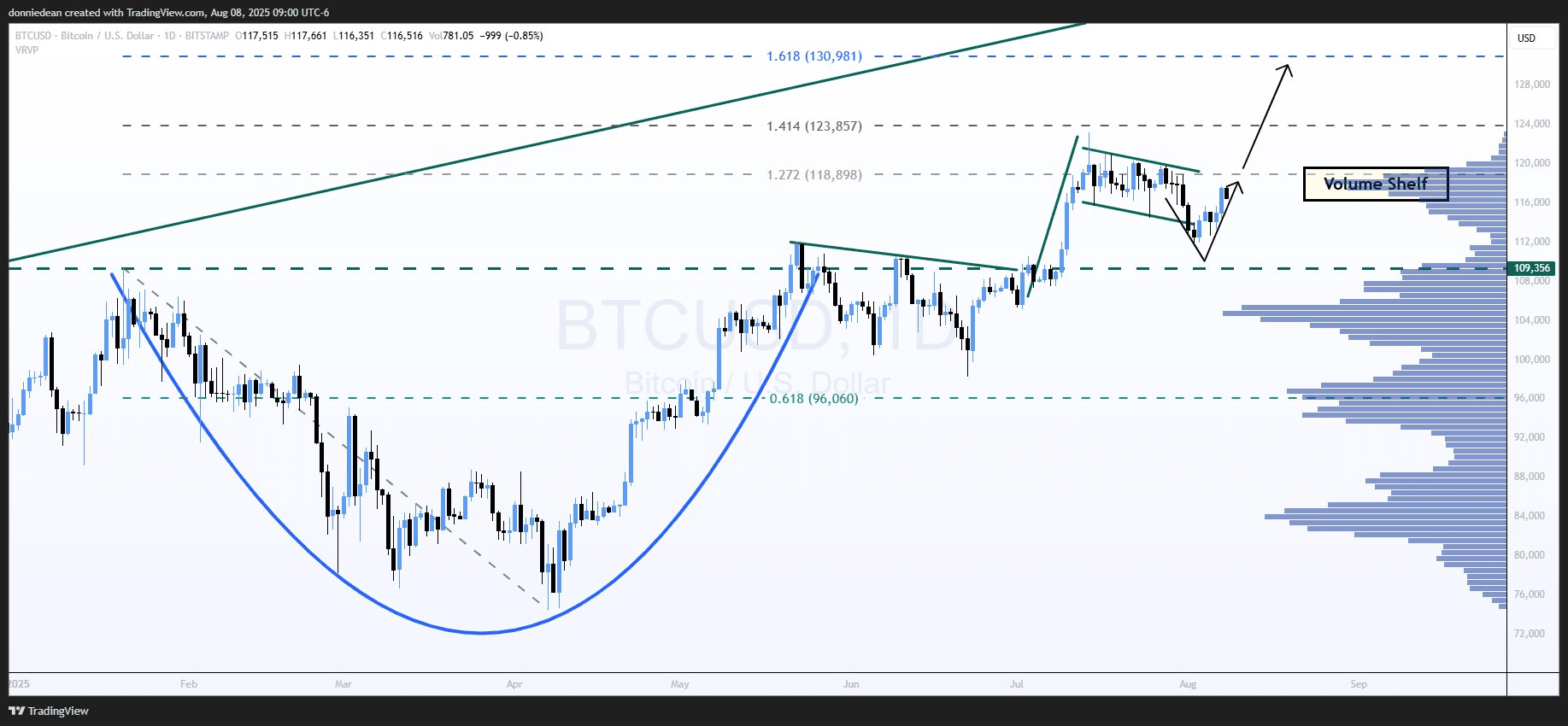After a significant correction at the end of July, the Bitcoin market has shown signs of recovery in the past week, with a 2.73% increase according to data from CoinMarketCap. However, this upward momentum has been halted, causing the leading cryptocurrency to revert to trading around $116,000. Currently, the market is awaiting the next signal, as accumulated trading data indicates the potential for a strong surge to new highs.
Strong Support Area: Golden Ratio In Sight
On August 8, financial analyst Donald Dean shared a positive forecast for Bitcoin on X. He pointed out that on the daily BTC/USDT chart, Bitcoin is forming a volume shelf — a price area where trading volume accumulates significantly.
On the chart, the volume shelf appears at around $116,000 – $118,000. According to Dean, if Bitcoin holds steady and accumulates in this area, buying pressure will be strong enough to become a 'springboard' for a new breakout.

He predicts that after this accumulation phase, Bitcoin may aim for the 1.618 Fibonacci extension — also known as the 'golden ratio' — around $131,000. This is an important technical milestone, equivalent to an increase of about 12.93% compared to the current price.
Bitcoin Market Overview
As of the time of writing, Bitcoin is trading at $116,756, down slightly 0.02% in the past 24 hours. Trading volume decreased by 20.97%, down to $55.24 billion.
According to data from CoinCodex, market sentiment remains strongly bullish, with the Fear & Greed Index at 67 (leaning towards 'greed'). However, many experts predict that Bitcoin will continue to oscillate within a narrow range in the short term:
Next 5 days: around $117,167
Next 30 days: around $115,980
Next 3 months: could retreat to $112,688 before bouncing back.
Conclusion
Bitcoin is facing an important price area, both strong support and a potential launch pad. If it surpasses the $118,000 area with solid buying volume, the target of $131,000 is entirely feasible. However, investors should be aware that before reaching this milestone, the market might experience short-term corrections.
